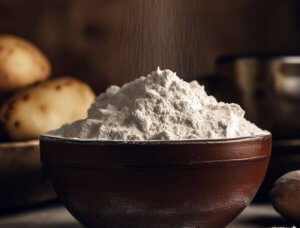What is the best Potato Flour substitute?
What is the best potato flour substitute? Are you on the hunt for the perfect potato flour alternatives for your baking needs? Look no further! Whether you need to avoid potato flour due to dietary restrictions or simply want to experiment with new flavors and textures, we’ve got you covered.
Discover the magic of potato flour alternatives and unlock a whole new world of delicious possibilities in your kitchen. Get ready to amaze your taste buds and impress your friends and family with your baking prowess! Let’s dive in and find the perfect alternatives for all your baking adventures.
Try using: Cornstarch, Arrowroot, Tapioca Flour, Mashed Potato, Quinoa Flour, Rice Flour, or Almond Flour.
What is Potato Flour?
Potato flour is a versatile gluten-free flour made from dried and ground potatoes. It’s a fantastic ingredient for various recipes, especially if you’re exploring gluten-free options. Potato flour is known for its ability to add a light, fluffy texture to baked goods like bread, pancakes, and muffins. It’s also a great thickening agent for soups, stews, and sauces. When using potato flour as a substitute, keep in mind that it absorbs more liquid than wheat flour, so you might need to adjust your recipes accordingly. It’s a valuable addition to your collection of alternative flours for gluten-free and unique culinary creations.
Okay, before we look at your potato flour substitute options, let’s deal with that empty cupboard situation!
Where can I buy Potato Flour?
If you want to be more prepared and ensure you don’t run out of potato flour, then you should stock up now.
Nowadays, most general supermarkets stock some brands of potato flour. Or if you prefer you can also purchase potato flour on-line.
So why not jump on and place your order today.
STOCK UP NOW!
Very fine potato flour that makes a perfect dough. The flour is made with 100% natural whole peeled potatoes. Perfect for breads and scones.
Also use as a thickener is soups and gravies.
Gluten free. Non-GMO.
What can I substitute for Potato Flour?
Here are some of the best ingredients to substitute the flavor and role that potato flour provides in your recipes.
- Cornstarch
- Arrowroot
- Tapioca Flour
- Mashed potato
- Quinoa Flour
- Rice Flour
- Almond Flour
Potato Flour substitutes
Cornstarch
Cornstarch is a fine, white powder made from corn kernels, and it’s a great ingredient to have in your kitchen. When it comes to substituting it for potato flour, you’re in luck because you can use them interchangeably in many recipes.
Cornstarch is an excellent thickening agent, just like potato flour. You can use it to thicken sauces, soups, and gravies, giving them a silky-smooth texture. To substitute it for potato flour, you typically use a 1:1 ratio, meaning for every tablespoon of potato flour a recipe calls for, you can use a tablespoon of cornstarch instead.
One thing to keep in mind is that cornstarch doesn’t add flavor to your dishes, while potato flour may have a slightly potato-like taste. So, in recipes where the potato flavor is essential, consider this difference. Otherwise, cornstarch is a versatile and handy ingredient for your culinary adventures!
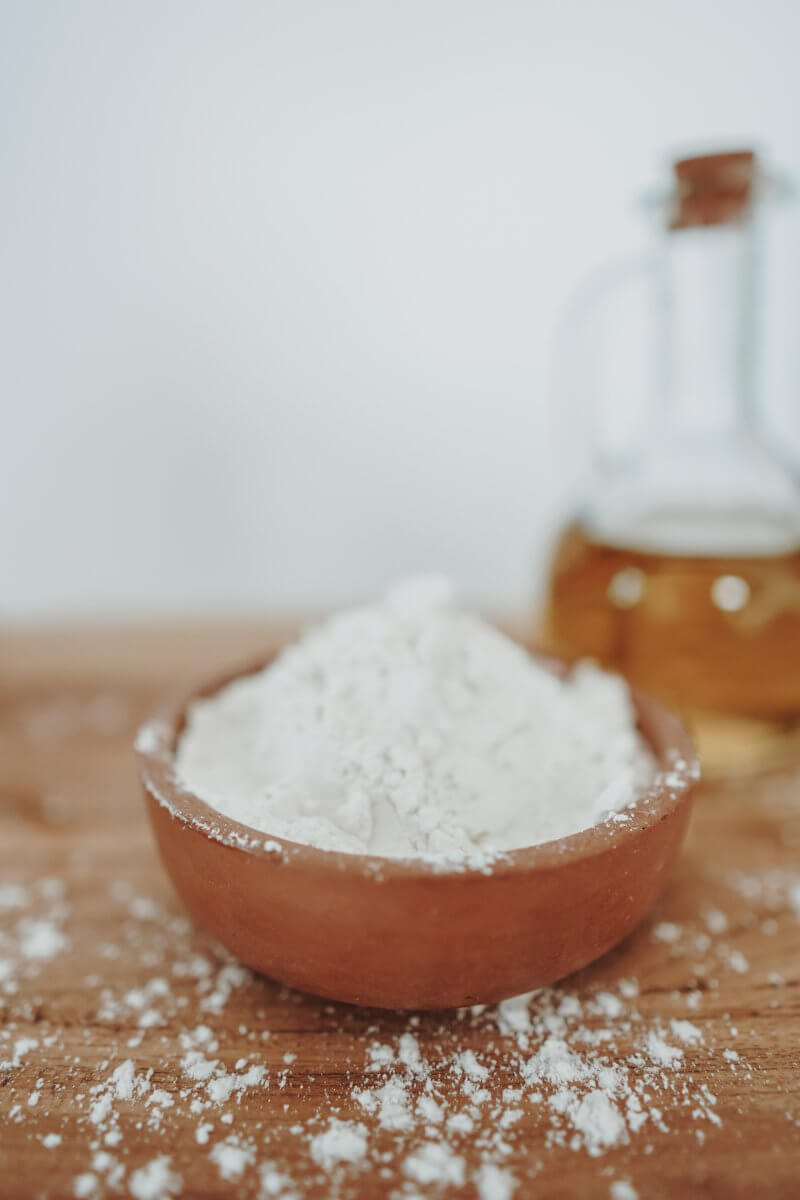
Arrowroot
Arrowroot is another fantastic ingredient you can use in your culinary endeavors, and it can be a suitable substitute for potato flour in certain recipes.
It is actually a starch extracted from the roots of tropical plants. You can use arrowrot as a thickening agent, much like potato flour. It has a neutral taste and is gluten-free, which makes it a versatile option. To use it as a substitute for potato flour, you can typically do a 1:1 swap.
Here’s how you can use arrowroot as a replacement:
- Thickening: Use arrowroot to thicken sauces, gravies, and soups just like you would with potato flour. Mix it with a bit of cold water to form a slurry. Then slowly add it to your hot liquid to prevent lumps.
- Baking: Use arrowroot when baking as it is a great alternative for potato flour in recipes for cookies, cakes, or muffins. It helps to create a tender texture in your baked goods.
- Coating: Use arrowroot as a coating for frying, similar to how you might use potato flour or cornstarch. This will help you to achieve a crispy texture on fried foods.
Keep in mind that arrowroot can be a bit more delicate than potato flour in some applications. Therefore, it’s best suited for recipes where a neutral taste and a lighter texture are desired. Give it a try, and don’t hesitate to experiment to find the perfect balance for your dishes!
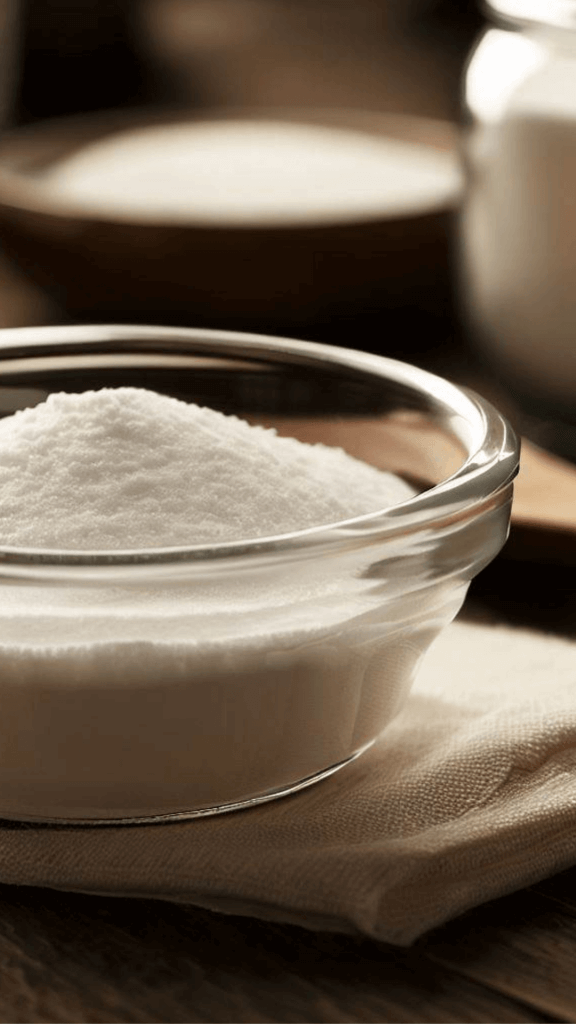
Tapioca Flour
Tapioca flour is a versatile gluten-free flour made from the cassava root. It’s a great ingredient to have in your pantry, and it can work as a substitute for potato flour in certain recipes.
Tapioca flour is known for its starchy and slightly sweet flavor, which can add a unique touch to your dishes. Here’s how you can use it as a substitute for potato flour:
- Thickening: Like potato flour, tapioca flour is an excellent thickening agent. You can use it in soups, sauces, and gravies to achieve a smooth and glossy texture. To substitute, use a 1:1 ratio, so if a recipe calls for a tablespoon of potato flour, you can use a tablespoon of tapioca flour instead.
- Baking: Use tapioca flour in gluten-free baking. It can add a nice chewiness and elasticity to gluten-free bread, muffins, and cookies. In recipes that call for potato flour, you can usually use tapioca flour as a 1:1 replacement.
- Frying: Use tapioca flour as a coating for frying to achieve a crispy texture on foods, similar to potato flour.
- Puddings and Desserts: Tapioca flour is a key ingredient in making tapioca pudding, but you can also use it to thicken fruit fillings in pies and tarts.
Keep in mind that tapioca flour has a unique texture and flavor compared to potato flour, so it may not be suitable for every recipe. It’s perfect for adding a delightful twist to your dishes, especially if you want a slightly sweeter and chewier outcome.
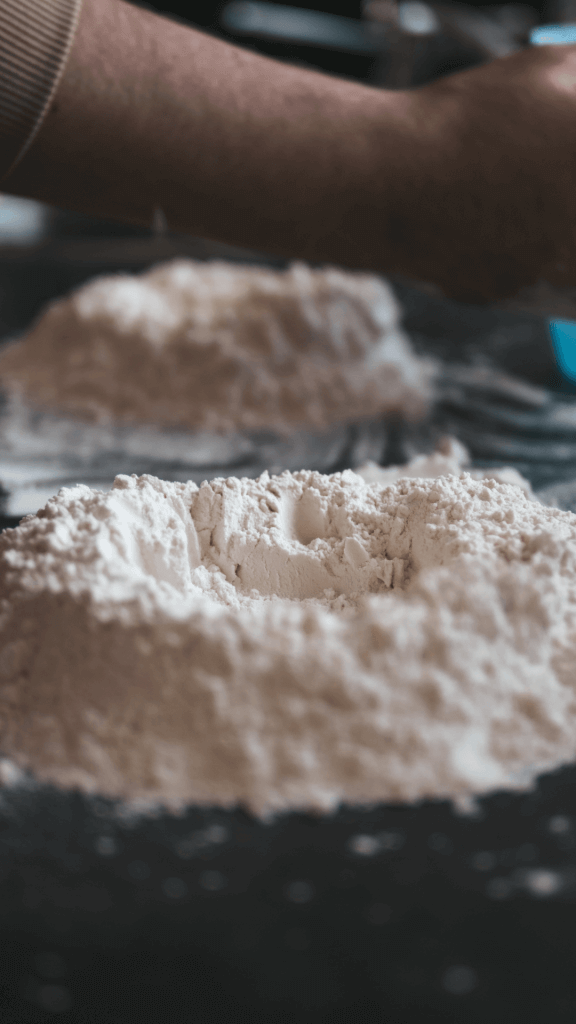
Mashed potato
Mashed potatoes are a classic comfort food made by boiling and then mashing potatoes, typically seasoned with butter, milk, salt, and pepper. They have a creamy texture and a mild potato flavor, making them a versatile ingredient. While mashed potatoes themselves can’t replace potato flour in most recipes, you can still use them creatively in your dishes.
Here are some ways to use mashed potatoes as a substitute for potato flour:
- In Baking: Mashed potatoes can add moisture and a subtle potato flavor to your baked goods. You can use them in recipes for potato bread, rolls, or even potato-based pancakes. Just keep in mind that the texture may be different from what you’d get with potato flour.
- Thickening: In some recipes, especially for soups and stews, you can use mashed potatoes as a thickening agent. Simply stir in a scoop of mashed potatoes to achieve the desired consistency. This works well in recipes where the potato flavor won’t be overpowering.
- As a Binder: Mashed potatoes can act as a binder in dishes like potato croquettes or veggie burgers, helping to hold the ingredients together.
Remember that mashed potatoes contain moisture, which can affect the texture of your dishes. So, it’s important to experiment and adjust your recipe accordingly. While they may not be a perfect one-to-one replacement for potato flour, mashed potatoes can certainly add a delicious twist to your creations!
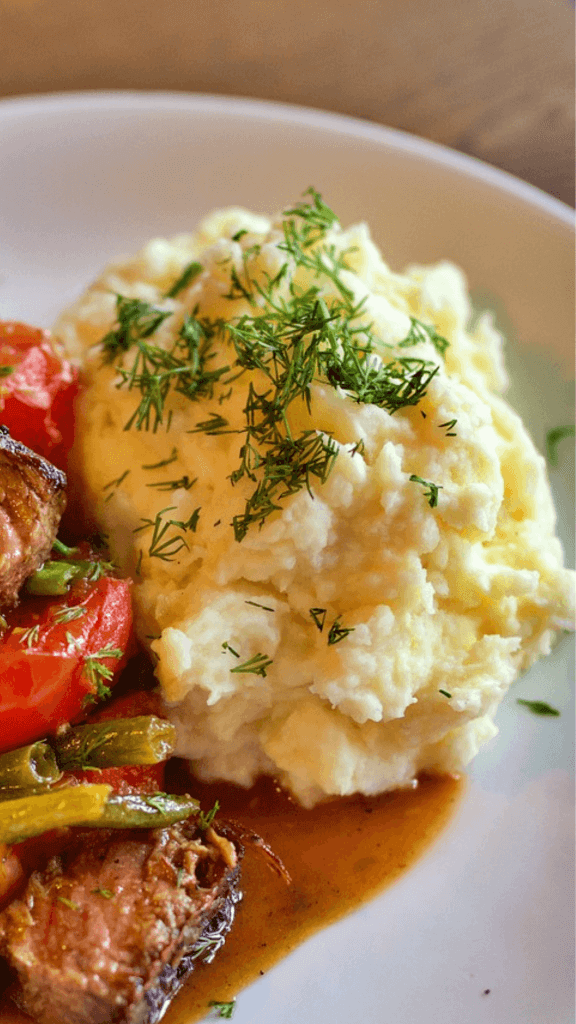
Quinoa Flour
Quinoa flour is a gluten-free flour made from ground quinoa seeds, and it can be a valuable addition to your pantry, especially if you’re looking for gluten-free alternatives or unique flavors in your recipes.
Using quinoa flour as a substitute for potato flour requires a bit of adaptation because they have different properties. Potato flour is often used as a thickener and binder, while quinoa flour has a nutty flavor and a different texture. Here are some ways you can use quinoa flour as a substitute:
- Baking: Use quinoa flour in gluten-free baking recipes. It adds a nutty taste and a certain level of density to your baked goods. When substituting, you might need to use less quinoa flour than potato flour, as it can be denser. Start with a 1:1 ratio and adjust as needed.
- Binding Agent: Quinoa flour can act as a binding agent in recipes for veggie burgers, meatballs, or other dishes where you need ingredients to stick together. Its nutty flavor can complement various savory dishes.
- Thickening: While not as efficient as potato flour in thickening sauces and gravies, you can use quinoa flour in a pinch. Mix it with a bit of cold water to form a slurry and then add it to your hot liquid, similar to how you’d use potato flour.
- Flavor Enhancement: Quinoa flour can add a unique flavor and nutrition to your recipes. It works well in dishes where the nutty taste is a good fit.
Remember that quinoa flour has a distinct flavor and texture, so it might not be a perfect substitute in all recipes. It’s best suited for recipes where the nutty taste can enhance the overall flavor profile.
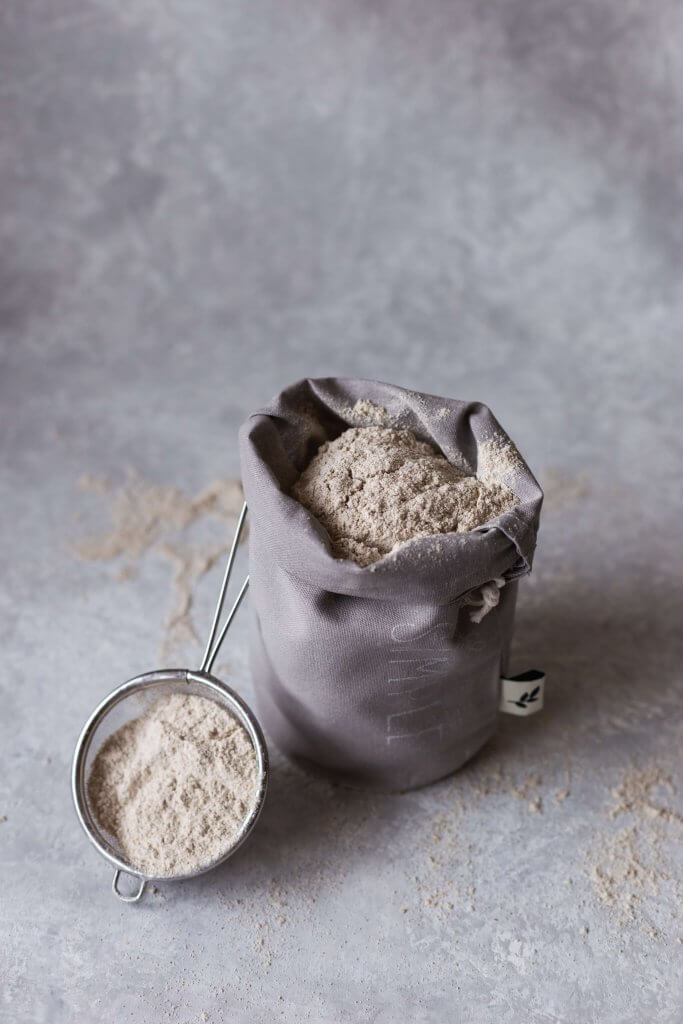
Rice Flour
Rice flour is a versatile gluten-free flour made from finely ground rice grains. It can come in both white and brown varieties. It’s a fantastic ingredient to have in your kitchen, and it can work as a substitute for potato flour in certain recipes.
Here’s how you can use rice flour as a substitute:
- Baking: You can use rice flour in gluten-free baking. It can be a great substitute for potato flour in recipes for cookies, cakes, and other baked goods. You can often do a 1:1 replacement, meaning if a recipe calls for a tablespoon of potato flour, you can use a tablespoon of rice flour instead.
- Thickening: Rice flour is an effective thickening agent, similar to potato flour. It’s especially handy for thickening sauces, gravies, and soups. To substitute, use it in the same way you would use potato flour, creating a slurry by mixing it with cold water before adding it to hot liquids.
- Coating for Frying: Use rice flour as a coating for frying, just like potato flour. It helps create a crispy and golden exterior on fried foods.
- Dough and Batters: Use rice flour in various dough and batter recipes, such as tempura batter, dumpling dough, or even for making gluten-free pancakes and crepes.
One thing to keep in mind is that rice flour has a milder flavor compared to potato flour, so it won’t add a potato-like taste to your dishes. It’s a versatile option for gluten-free and crispy textures in your recipes.
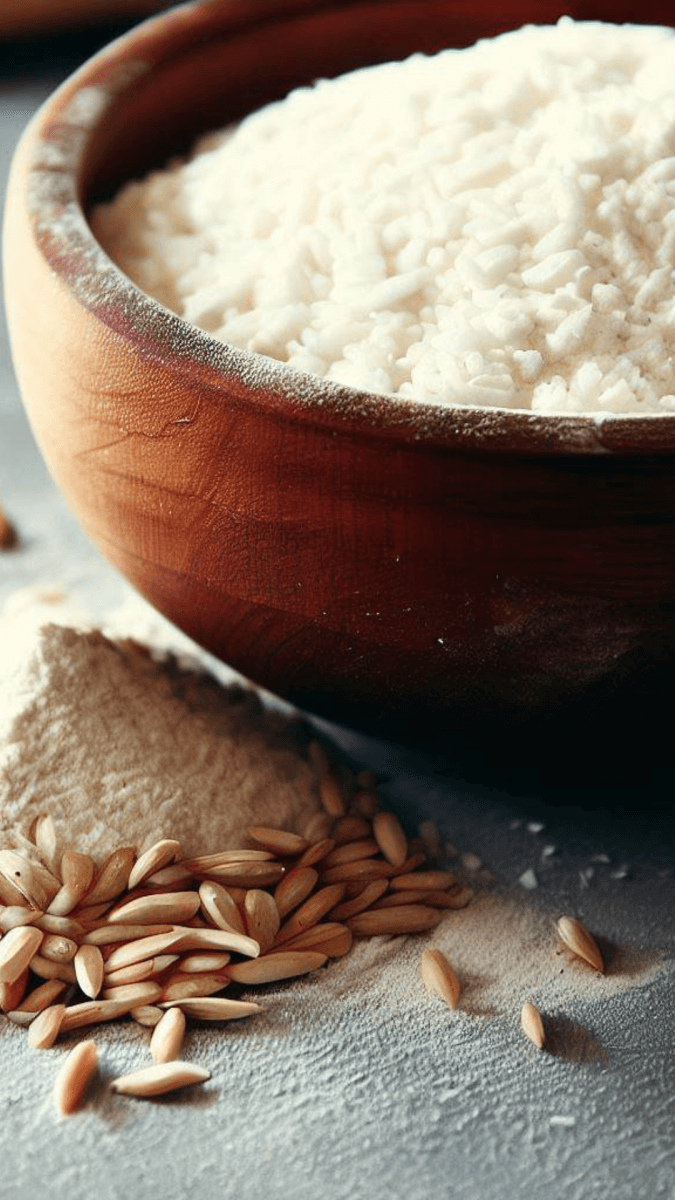
Almond Flour
Almond flour is a gluten-free flour made from finely ground almonds. It’s a popular choice in gluten-free and low-carb baking, and it can work as a substitute for potato flour in specific recipes. Here’s how you can use almond flour as a substitute:
- Baking: You can use almond flour in baking recipes, particularly for gluten-free and paleo-friendly options. It adds a lovely nutty flavor and a moist texture to baked goods. You can typically use almond flour as a 1:1 substitute for potato flour in recipes like cookies, muffins, and cakes. However, keep in mind that almond flour is denser, so it may result in a slightly different texture.
- Thickening: While almond flour isn’t a traditional thickening agent like potato flour, you can use it to thicken certain dishes. Mix it with a bit of cold water to create a slurry, then add it to soups or sauces to thicken them. Just be aware that it won’t provide the same smooth texture that potato flour does.
- Coating: Use almond flour as a coating for frying or baking. This will helo you to achieve a crispy and flavorful crust on foods like chicken tenders or fish fillets. It imparts a delicious nutty flavor.
- Breading: In recipes that call for potato flour as part of a breading mixture, you can use almond flour as a substitute to create a gluten-free option. It works well for dishes like chicken schnitzel or breaded vegetables.
Almond flour’s nutty taste can add a unique and delightful flavor dimension to your dishes. Keep in mind that it won’t provide the same texture or thickening properties as potato flour.
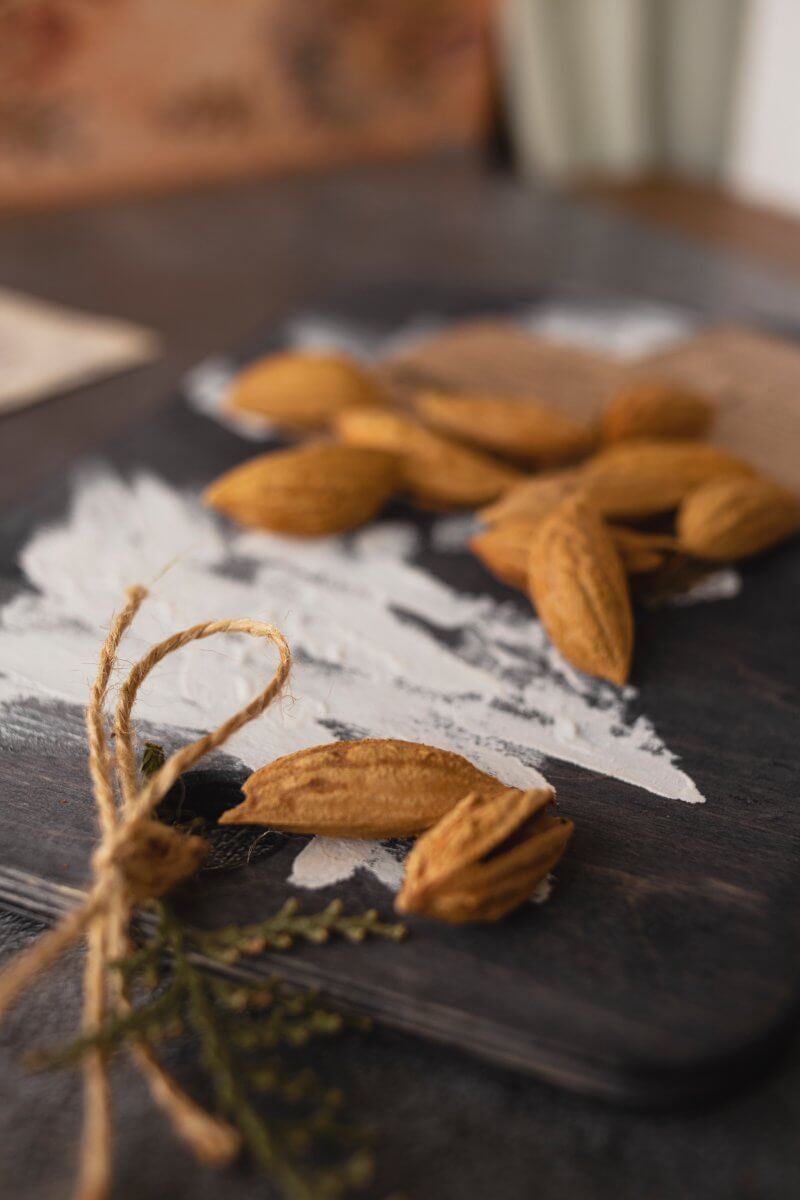
Summary for Potato Flour substitutes
Okay – that’s you all sorted with suitable substitutes for potato flour.
Here’s a quick summary of the substitutes for potato flour that were mentioned:
- Cornstarch: A fine powder made from corn kernels, it’s great for thickening sauces and you can use it as a 1:1 substitute for potato flour in most recipes. It doesn’t add flavor to dishes.
- Arrowroot: A starch extracted from tropical plants, it’s versatile for thickening and you can use it as a 1:1 substitute for potato flour. It has a neutral taste.
- Tapioca Flour: Made from cassava roots, it’s gluten-free and can replace potato flour in baking, thickening, and coating applications at a 1:1 ratio. It has a slight sweetness.
- Mashed Potatoes: While not a direct substitute, you can use mashed potatoes in baking, as a thickener, or a binder in recipes where their texture and mild potato flavor are suitable.
- Quinoa Flour: Ground from quinoa seeds, you can use quinona flour in baking and as a binder, adding a nutty flavor. Adjust the ratio as it has a different texture than potato flour.
- Rice Flour: Made from ground rice grains, it’s great for gluten-free baking, thickening, coating, and doughs, often used at a 1:1 ratio as a substitute.
- Almond Flour: Ground almonds yield this gluten-free flour, which is perfect for baking, coating, breading, and creating a nutty flavor in your dishes. It can typically replace potato flour at a 1:1 ratio.
Each of these substitutes offers unique flavors and textures, so choose the one that best suits your recipe and experiment to achieve the desired results.
We have gathered together a lot more facts on ingredients such as herbs, spices, oils, nuts, etc. if you would like to learn some more.
Or if you need to swap out another ingredient have a look at our Substitutes section.
